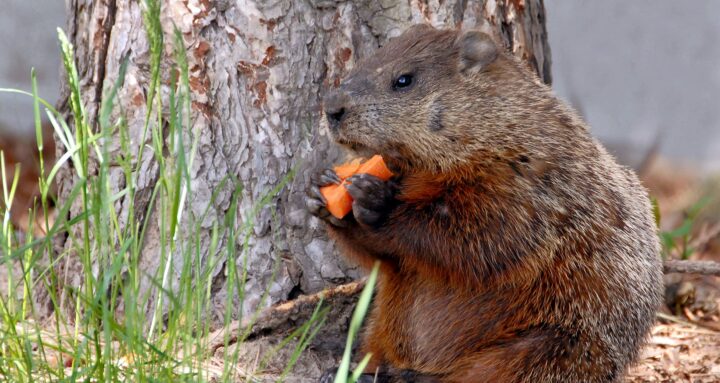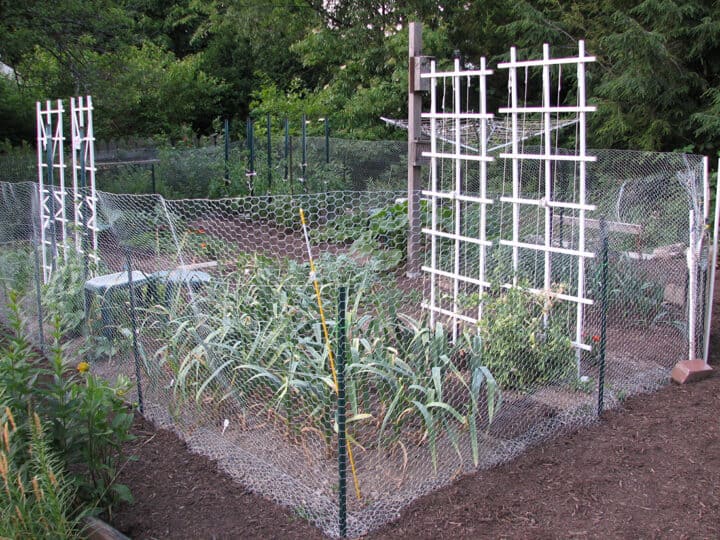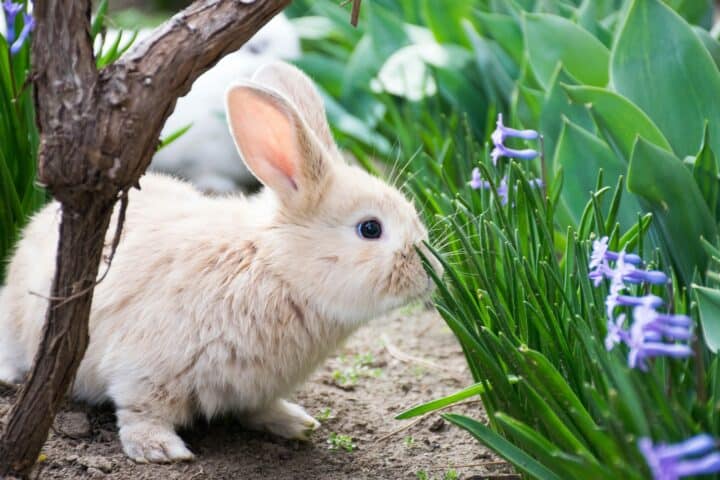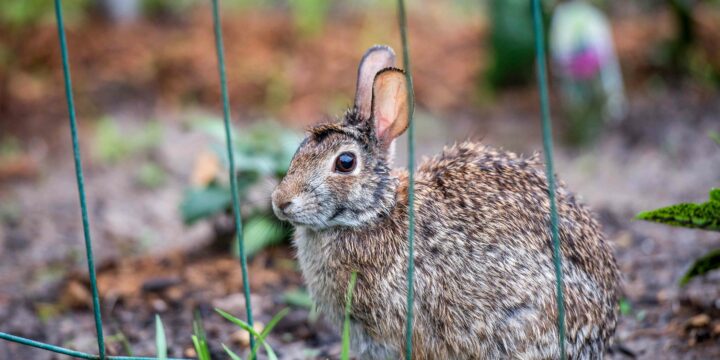Have you noticed rabbits and groundhogs attacking your garden, and you want to keep them away? If so, then you’re in the right place. By the time you’re done reading this article, you’ll know how to keep rabbits and groundhogs out of the garden.
Keeping rabbits and groundhogs out of the garden is simpler than you may think. There are many solutions including trapping, building fences, using repellents, ivory soap, and more.
In this article, you’ll get to know the different ways how to keep rabbits and groundhogs out of the garden. Stick around to get all the answers.
Tired of rabbits and groundhogs infesting your garden?
Most people react to rabbits and groundhogs infesting their gardens with a smile, as they find these cute animals adorable. However, deep down, they know that their weeks of hard work has been ruined by these cute, little animals. Mammals may be cuter than insects and weeds, but their appetite will destroy your garden. Preventing them from entering your garden is far better than fixing your garden once the damage is done.
When your beautiful flowery garden gets invaded by furry little animals, it is normal to be discouraged. You might find them cute, but you know that their cuteness won’t undo the damage they’ve done to your garden. Luckily for you, there are many effective methods for how to keep rabbits and groundhogs out of the garden.
For finding a successful solution, it’ll be important to identify the party responsible for the damage. This will help you better understand the behavior of your opponent, their likes, their dislikes, and preventive measures. Next up, you should think of how to make your garden less accessible to the likes of rabbits and groundhogs. This will include any nesting or hiding areas like tall grass, bush piles, and more. You should also seal off access to any crawl spaces under your deck or porch. Minimize other food sources like loose birdseed, compost piles, and grub populations on the lawn.
Poison baits are also an extreme solution, as it works against some types of rodents. It is important to know that they’re cruel and pose a great deal of danger. Scissor traps and smoke bombs kill some types of pests. However, they’re gruesome solutions and shouldn’t be used. There are many more humane and wildlife-friendly ways you can keep rabbits and groundhogs out of your garden.
How to keep rabbits and groundhogs out of the garden?
How to keep groundhogs out of the garden?
Groundhogs are one of the biggest struggles you’ll face if you maintain a garden. These mammals are proficient diggers as well as agile climbers. They are commonly seen sitting on trees and plants, munching on fruits. Here are some of the best ways to keep groundhogs away from your garden.
Block them by using fencing
Preventing groundhogs from entering your garden will require a bit of finesse, but it can be done with ease. Fully enclosing the garden with plastic netting will not work as a groundhog can easily chew right through it. If you’re fencing your garden, prefer using metal fencing such as galvanized cattle fencing or chicken wire. You should bury the bottom edge of the fence around a foot below the ground.
Remember not to secure the top 18 inches of the fence to the post. If the groundhog tries digging under the fence, the buried wire will easily stop them. If they try climbing, the unattached top edge of the fencing will flop down under the weight of the groundhogs and knock them down to the ground.
Employ the spray deterrents
Some spray repellents come exclusively for use against groundhogs. You should always check the shelves of local nurseries and see if they have any spray deterrents on-hand. Make sure that you’re religious about using them.
Live trap the groundhogs
A better option would be to live trap and capture the groundhogs. These traps will be metal adhesive. These will come with a trip plate that closes the trap’s end if an animal step on it. Ensure that you are selecting the right sized trap and bait it properly. Interestingly, marshmallows are pretty good when it comes to baiting groundhogs. Similarly, ripe cantaloupe and peanut-covered apple slices work well too. Set the traps where you have noticed the presence of groundhogs.
You can leave a trail of small pieces of marshmallow as bait outside the trap and lead them into it. Then, you can put comparatively bigger chunks of bait inside the trap on the trip plate.

Groundhogs are normally active during the day, so you can close the trap at night. If you don’t find them trapped at night, remember to look for the groundhogs the first thing in the morning. Check the trap multiple times a day. You can even call your state’s officials or a professional company to help you start traps. They will help you deal with groundhogs while also dealing with them once they’re trapped.
In many states, it’s illegal to release an animal (like groundhogs) with a rabies vector into a different area. CDC reported that in the 90s, groundhogs accounted for over 90% of the cases of rabies among rodents. You must do your homework before trapping the groundhog or any other animal. Every state will have different laws and regulations in place. You must pay attention to those regulations; otherwise you may face a hefty fine.
How to keep rabbits out of the garden?
Rabbits are very frequent visitors to gardens. Occasionally, you might find a rabbit munching on the leaves and plants in your garden. However, selecting rabbit-resistant plants and ivory soap should be your first choice of weapon. These are non-lethal yet highly effective options to try.
- Use a rabbit repellent
There are several commercial animal repellents that are labeled for use against rabbits. Granular repellents can be sprinkled around your garden, forming a scent barrier. These rabbit repellents aren’t supposed to come in contact with plants or flowers themselves. Instead, these should be sprinkled on the ground. Spray repellents will be a great option for ornamental plants. Many of them are based on egg solids, hot peppers, and other types of odorous and distasteful ingredients. These will work very similarly to deer repellents. - Fence the garden
The easiest way of keeping unwanted rabbits out of your garden would be to install a fence around the garden. It only needs to be around two feet high, as rabbits cannot jump very high. However, you will want to bury the base of your fence to keep rabbits from burrowing under it. For keeping out small baby rabbits, you should ensure that the holes in the fence are less than 2-inches. Box wire and chicken wire will work very well for this method. - Block off access to individual plants
You also keep these naughty rabbits away by installing blockades around their favorite plants. You can use a foot-tall collar of galvanized hardware cloth and place it around the base of all plants. This will keep the rabbits away from the plants they’re attracted to. You can also cut a sheet of hardware cloth. Then, bend it into a ring 2-3 inches wider than the width of the plants. Lastly, fasten it closed using a couple of plastic zip ties.
Alternate ways to keep rabbits and groundhogs out of the garden?
There are many other ways to keep rabbits and groundhogs out of your garden. This way, you can keep unwanted animals out and continue gardening and harvesting for yourself.
Reduce the food supply in the garden
One of the best ways of discouraging rabbits and groundhogs would be to harvest your garden frequently. The favorite foods of these cute little mammals include tender greens like cabbage and lettuce. They also love cantaloupes, cucumbers, green beans, corn, and zucchini. You must pick them as soon as they’ve become ripe, instead of leaving them in the open for days.
Block the rabbits and groundhogs out
Surround your garden with a wire mesh at least 3-4 feet high and at least 12 inches underground. Groundhogs will not be able to climb over the mesh and if they try going underground, they’ll be stopped too.

They’ll have no choice but to stop tunneling and go somewhere else to set up their camp and hunt food. To get the best results, you should create a bracket shape by simply bending the top and bottom of the barricade. You should bend it at a 90° angle toward the outside of your garden.
Hire a professional to set live traps
Catching and releasing rabbits and groundhogs can be tricky. These traps are normally made using galvanized steel mesh and will come in different sizes. Marshmallows, vegetables, and fruits can be used for luring them inside the trap. Once they’re in the trap, a spring-loaded door will close and lock them in. It can be tricky to catch rabbits, groundhogs, and other mammals in a live trap. It can be even trickier to figure out if you’ve caught them and what to do with them. This is why you should consider hiring a professional to set up live traps and trap the mammals for you.
Keep your garden neat and well-maintained
Rabbits and groundhogs love to camouflage the exits and entrances to their burrows. Moreover, they love hiding when they sense danger around. You should remove the hiding places by removing tall grass, trimming the ground, clearing bush piles, pulling weeds, and more.
Temporarily protect plants with fabric
Many rodents, especially rabbits and groundhogs, love munching on tender leafy greens in the gardens. For that reason, they can cause more damage during spring and early summer. Once plants have grown for a few weeks, stems and leaves will toughen up, becoming less tempting. For early season protection, you should consider covering up fledging plants with garden fabric. You can set up the garden fabric on all sides. However, leave it loose enough so that the plants push their way up as they grow.
Scent repellents
Commercial products that feature garlic, red pepper, castor oil, rotten eggs, and other ingredients are very effective. The key here is to re-apply the repellents as directed, especially during wet weather. Some plants like fritillaria and castor beans are believed to discourage rodents. Mothballs are recommended as a scent deterrent, but they shouldn’t be used as it is poisonous to pets.

Use visual and auditory scare devices
They include radios, ultrasonic sound machines, as well as motion-activated water sprayers. There are also visual scare devices like faux predators and reflective tape. The effectiveness of such devices will diminish over time as rabbits and groundhogs might become familiar with them. The element of surprise is most important, so you must continue to change your strategies.
Pets
Cats and dogs can be quite a nuisance for rabbits and groundhogs, as they’ll keep unwanted mammals away. Dogs are particularly good at nabbing rabbits, groundhogs, and squirrels.
Conclusion
Thank you for reading. Hopefully, now you know all about how to keep rabbits and groundhogs out of the garden. While these cute little animals might seem adorable, they can do a lot more damage than you may think. They will ruin weeks and months of hard work and leave your garden in an unrecognizable condition. There are many ways to keep rabbits, groundhogs, and other unwanted mammals away. Some of those ways include setting live traps, fencing, using spray repellents, and more.
